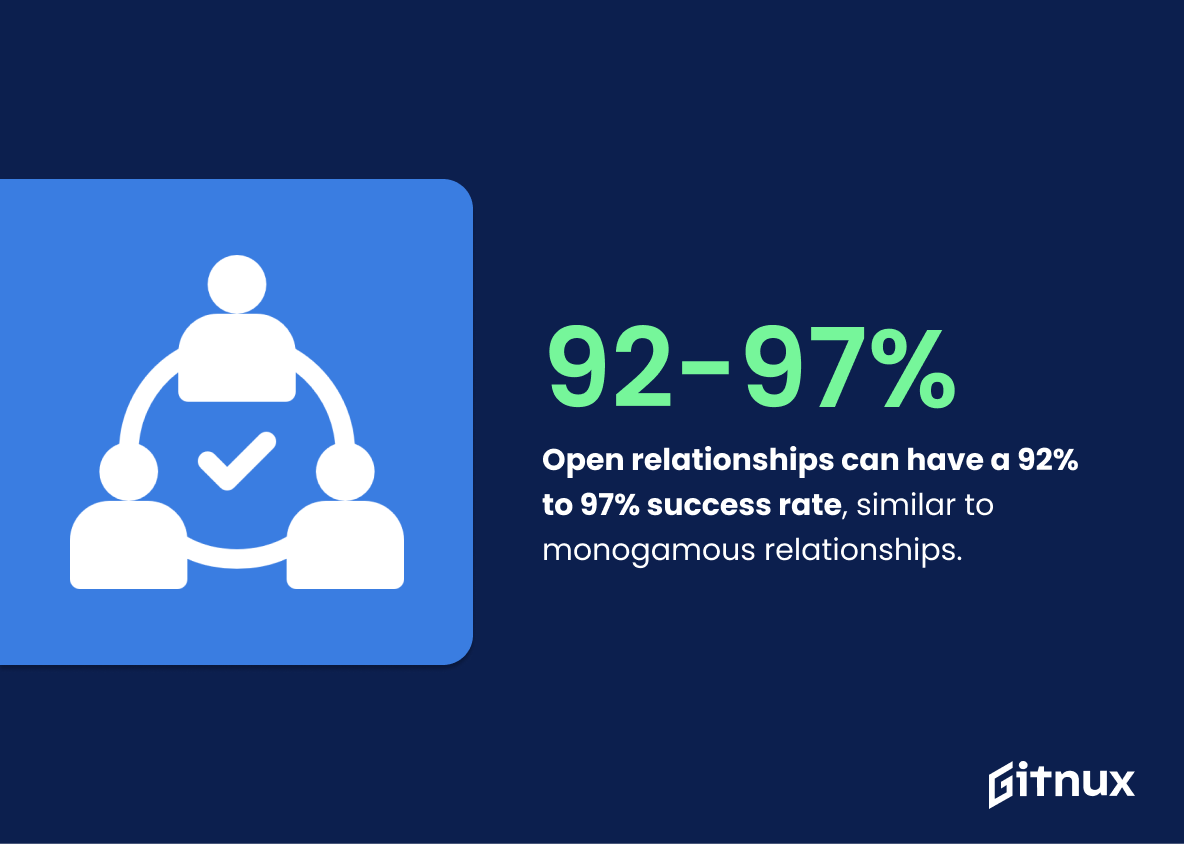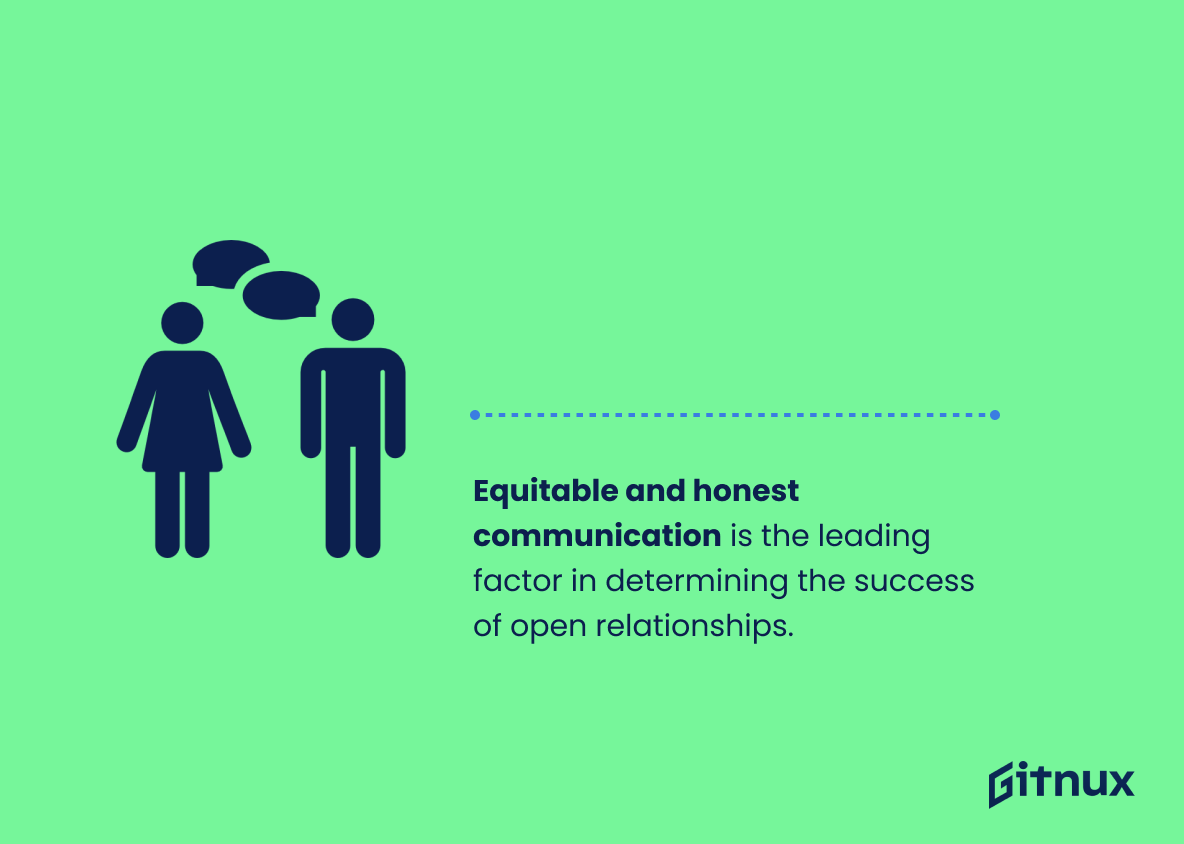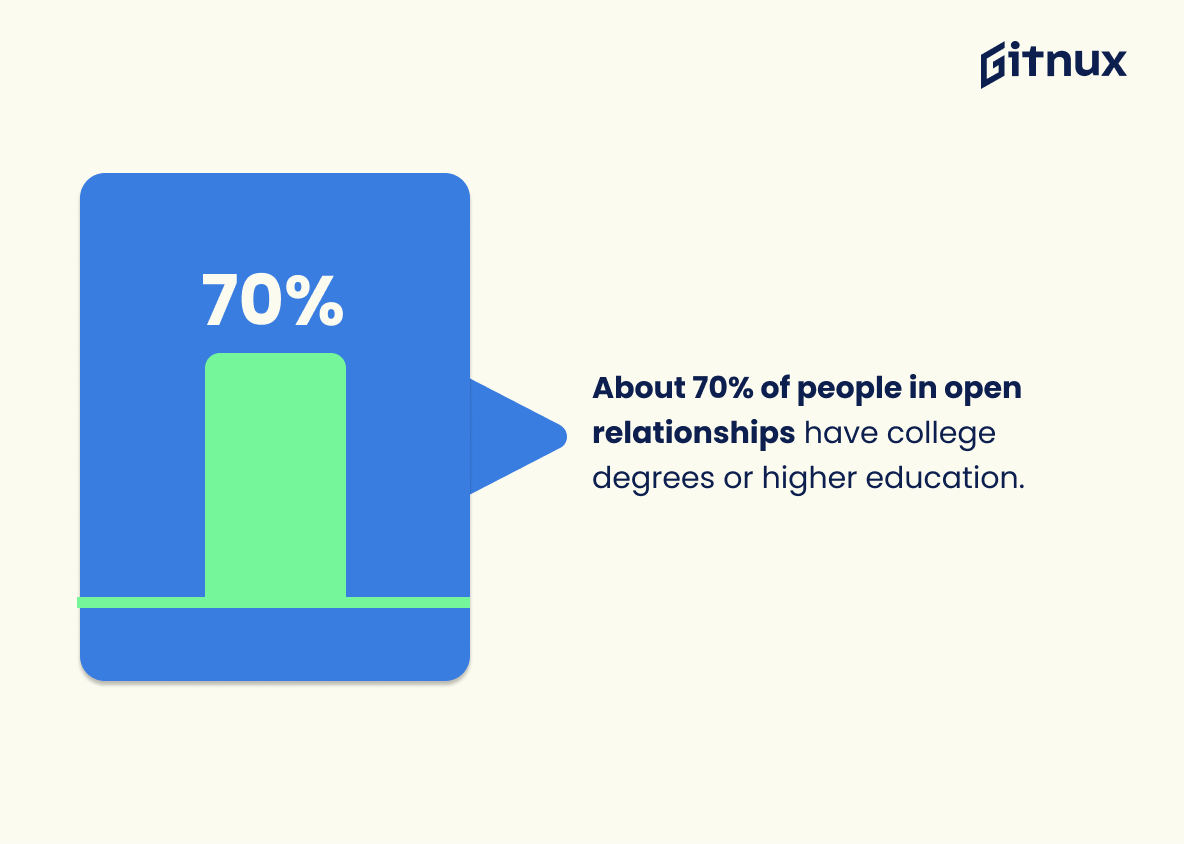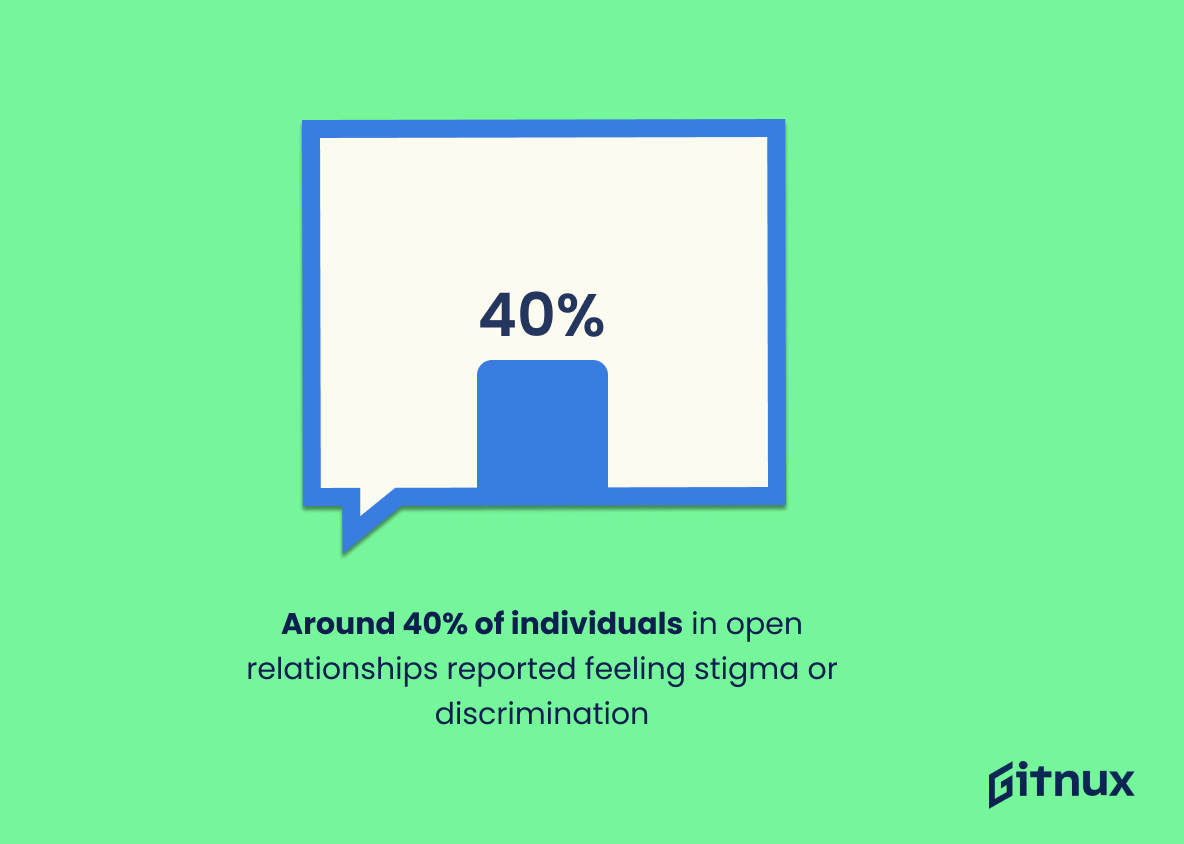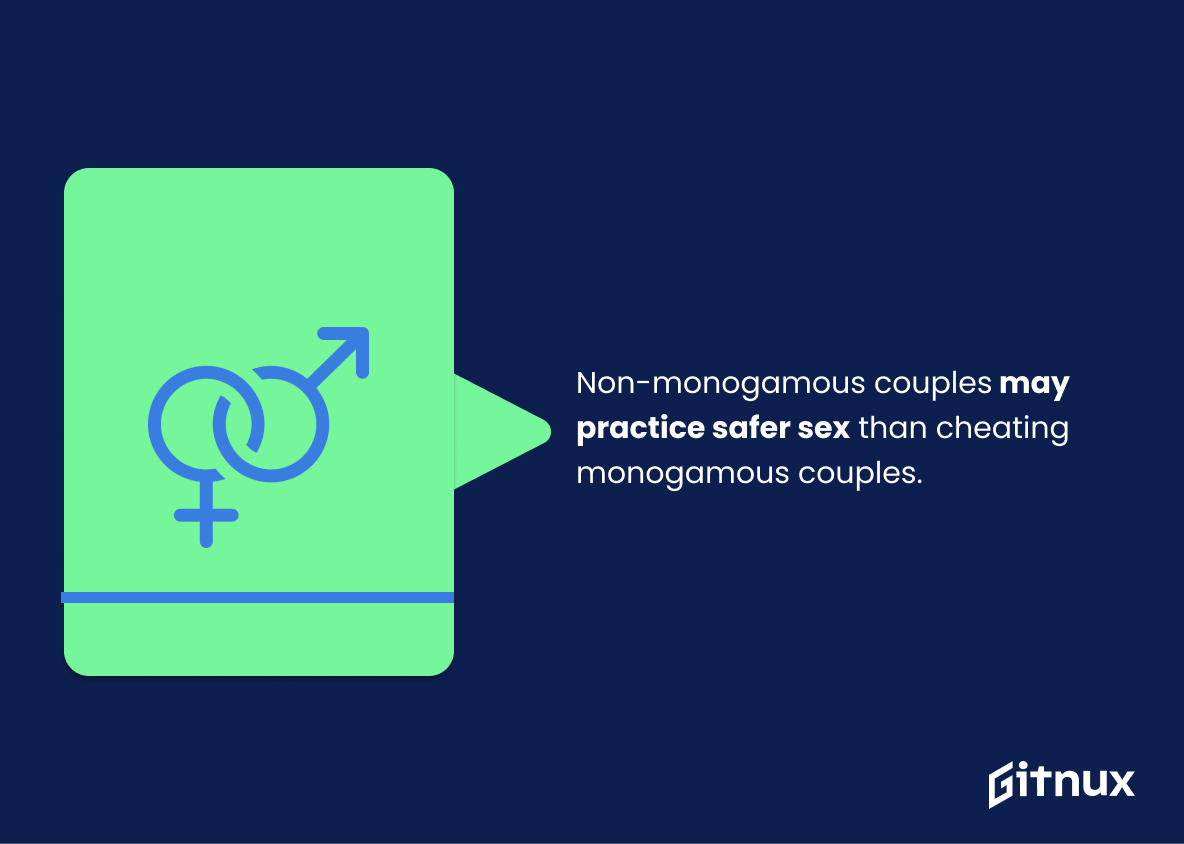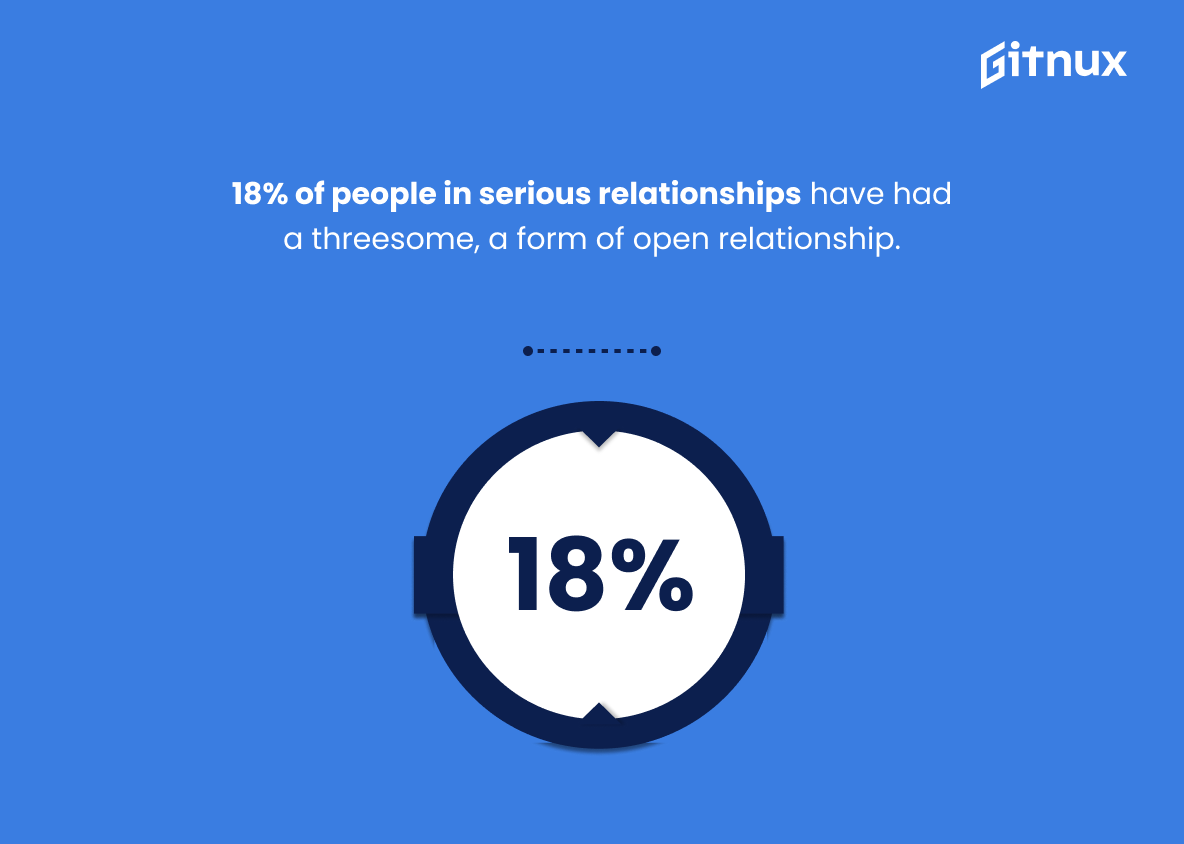Open relationships are increasingly common, with 4% of Americans involved in consensual non-monogamous relationships, as per Psychology Today. Taylor & Francis Online adds that around 12% of sexually active adults have had a non-monogamous experience. According to Springer Link, these open relationship couples often report higher sexual satisfaction than those in monogamous ones. One in five Americans have tried non-monogamy, says YouBeauty.
SAGE Journals reports that open relationships are preferred by 80% of practitioners. Success rates for open relationships, between 92%-97%, mirror those of traditional monogamy, according to Lasting Connections Network. Interestingly, Men’s Health reveals that those in open relationships are less likely to cheat, standing at 31% versus 21% in monogamous couples.
Powell Books emphasizes that honest communication is critical for success in such partnerships. The Institute For Family Studies finds that about 70% of those practicing an “open” lifestyle have college degrees or higher. Transitioning to open arrangements brought happiness and fulfillment for 67% of participants, Open Talk Magazine adds.
Contrary to common belief, Medium Kink Power says only 30% of gay couples engage in such practices. Less jealousy is reported by 53% of open couples, according to Psychology Today. Both genders experience equal pleasure from multiple partners, the International Society Of Sexual Medicine notes. Moreover, the Institute For Family Studies claims that quality communication is often better in polyamorous lifestyles.
About 40% feel stigmatized due to their non-traditional love choices, as per the National Center for Biotechnology Information. Trust levels are high among polyamorists, with an average score of 6 out of 7. Increased satisfaction over two years is reported by 33% of respondents, and 45% felt even happier after opening up. Safe sex practices are more common among polyamorous couples, and 18% engaged in threesomes at least once.
Let’s take a closer look at the most important statistics about open relationships.
Do Open Relationships Work Statistics Overview
Open relationships can have a 92% to 97% success rate, similar to monogamous relationships.
This statistic is a powerful testament to the potential success of open relationships. It shows that, contrary to popular belief, open relationships can be just as successful as monogamous ones. This statistic is an important piece of evidence that can be used to support the idea that open relationships can work, and that they should be taken seriously.
31% of men and 21% of women who identify as monogamous have cheated on their partner, while only 12% of those in open relationships have cheated.
This statistic speaks volumes about the effectiveness of open relationships in comparison to monogamous relationships. It suggests that those in open relationships are far less likely to cheat on their partner than those in monogamous relationships, indicating that open relationships may be a more successful way of maintaining a relationship.
Equitable and honest communication is the leading factor in determining the success of open relationships.
The statistic that ‘Equitable and honest communication is the leading factor in determining the success of open relationships’ is of utmost importance when discussing the viability of open relationships. This is because communication is the foundation of any relationship, and open relationships require an even greater level of communication in order to ensure that all parties involved are on the same page. Without equitable and honest communication, it is impossible to build trust and understanding between partners, which is essential for any relationship to thrive. Therefore, this statistic is a key factor in determining whether open relationships can work or not.
About 70% of people in open relationships have college degrees or higher education.
This statistic is significant in the context of a blog post about Do Open Relationships Work Statistics because it suggests that individuals with higher education are more likely to be in open relationships. This could indicate that those with higher education are more open to exploring alternative relationship dynamics, or that they are more likely to have the communication skills necessary to make an open relationship successful.
Only 30% of gay couples are in open relationships, contrary to popular belief, which estimates the percentage to be around 50% or higher.
This statistic is a powerful reminder that open relationships are not as common as many people think. It shows that the majority of gay couples are in monogamous relationships, despite the popular belief that open relationships are more prevalent. This statistic is important to consider when discussing the success of open relationships, as it provides a more accurate representation of the reality of the situation.
Both men and women in open relationships report having similar sexual satisfaction levels.
This statistic is significant in the context of open relationships because it suggests that couples in open relationships can still experience the same level of sexual satisfaction as those in monogamous relationships. This indicates that open relationships can be just as successful and fulfilling as traditional relationships, and that couples can still enjoy a healthy and satisfying sex life. This statistic is an important reminder that open relationships can be just as successful as monogamous ones, and that couples can still experience the same level of sexual satisfaction.
Around 40% of individuals in open relationships reported feeling stigma or discrimination because of their relationship status.
This statistic is a powerful reminder of the stigma and discrimination that individuals in open relationships still face. It highlights the need for greater understanding and acceptance of open relationships, and serves as a call to action for those who wish to create a more inclusive society.
45% of open relationship couples reported feeling happier after opening their relationship.
This statistic is a powerful testament to the potential success of open relationships. It shows that, for many couples, opening their relationship can lead to increased happiness and satisfaction. This statistic is an important piece of evidence that open relationships can work, and can be a viable option for couples looking to explore new ways of connecting with each other.
Couples in consensual non-monogamous relationships might be more likely to practice safe sex than couples in monogamous relationships who cheat.
This statistic is significant in the context of a blog post about Do Open Relationships Work Statistics because it highlights the importance of communication and trust in any relationship, regardless of its structure. Couples in consensual non-monogamous relationships are more likely to practice safe sex because they have discussed and agreed upon the boundaries of their relationship, and are more likely to trust each other to follow through with those boundaries. On the other hand, couples in monogamous relationships who cheat may not be as likely to practice safe sex, as they are not communicating openly and honestly about their relationship and may not trust each other to follow through with their agreements.
18% of people who identify as being in a serious relationship have participated in a “threesome,” which is one form of open relationship.
This statistic is a telling indication of the prevalence of open relationships in serious relationships. It suggests that a significant portion of people in committed relationships are open to exploring alternative forms of intimacy, which could be a sign that open relationships are becoming more accepted. This statistic is important to consider when discussing the success of open relationships, as it provides insight into how many people are actually engaging in them.
Conclusion
Based on the statistics presented, it is clear that open relationships can be successful and beneficial for those involved. While there are some risks associated with non-monogamous relationships, such as stigma or discrimination from others, couples in these types of arrangements report higher overall sexual satisfaction than monogamous couples.
Additionally, communication appears to be a key factor in determining success; equitable and honest dialogue between partners is essential for maintaining trust and stability within an open relationship. Ultimately, whether one chooses to pursue a monogamous or non-monogamous relationship should depend on their individual needs and preferences.
References
0. – https://www.menshealth.com
1. – https://www.link.springer.com
2. – https://www.powells.com
3. – https://www.thriveglobal.com
4. – https://www.ifstudies.org
5. – https://www.lastingconnections.net
6. – https://www.medium.com
7. – https://www.lehmiller.com
8. – https://www.tandfonline.com
9. – https://www.ncbi.nlm.nih.gov
10. – https://www.issm.info
